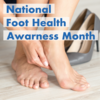From Struggles to Strides: Overcoming Achilles Tendinitis

Striding across the finish line, you revel in the exhilaration of completing a challenging race. But as the adrenaline subsides, a sharp pain creeps up from your heel, hindering your every step. You may have unknowingly become a victim of Achilles tendinitis, a common injury that affects millions of people worldwide. Whether you are an aspiring athlete, a weekend warrior, or simply someone who enjoys staying active, get ready to conquer the world, pain-free and one confident stride at a time!
What is Achilles Tendinitis?
Achilles tendinitis is a common overuse injury that can occur in anyone, regardless of age, fitness level, or lifestyle. The Achilles tendon is the largest tendon in the body, connecting the calf muscles to the heel bone. It is responsible for helping us walk, run, jump, and stand on our tiptoes. However, with repeated strain, the tendon can become inflamed, leading to Achilles tendinitis.
Athletes who participate in sports that require jumping or running, such as basketball, tennis, or track and field, are at a higher risk of developing Achilles tendinitis. The constant pounding and stress on the tendon can cause it to become inflamed and painful if left untreated, Achilles tendinitis can lead to chronic pain and can even rupture the tendon, requiring surgery.
What Causes Achilles Tendinitis?
Achilles tendinitis may be caused by an overuse of the Achilles tendon, which can result from a variety of activities. Some of the most common causes of Achilles tendinitis include:
Excessive Exercise: Overuse of the Achilles tendon through repetitive exercise, such as running or jumping, can lead to tendonitis.
Tight or Weak Calf Muscles: Tight or weak calf muscles can put more strain on the Achilles tendon and increase the risk of tendinitis.
Sudden Increase in Activity: A sudden increase in physical activity, such as starting a new exercise routine, can cause the Achilles tendon to become overworked and inflamed.
Age: As we age, our tendons become less flexible and more prone to injury, making older individuals more susceptible to Achilles tendinitis.
Improper footwear: Shoes that do not provide proper support or cushioning can put extra stress on the Achilles tendon, leading to injury.
Foot structure: Individuals with flat feet or high arches are more prone to developing Achilles tendinitis due to the extra stress on the tendon.
Symptoms of Achilles Tendinitis
The symptoms of Achilles tendinitis can vary depending on the severity of the condition. Some of the most common symptoms include:
Pain: The most common symptom of Achilles tendinitis is pain at the back of the ankle, which can range from mild to severe.
Stiffness: The Achilles tendon may feel stiff or tight, especially in the morning or after periods of inactivity.
Swelling: Inflammation of the Achilles tendon can cause swelling in the affected area.
Limited Range of Motion: Achilles tendinitis can limit the range of motion in the ankle, making it difficult to walk or run.
Cracking or Popping Sensation: Some individuals may experience a cracking or popping sensation when moving the ankle, which can indicate a tear in the Achilles tendon.
Treatment for Achilles Tendinitis
Treatment for Achilles tendinitis will depend on the severity of the condition. Some of the most common treatments include:
Rest: Resting the affected area is essential to allow the tendon to heal. Individuals with Achilles tendinitis should avoid activities that exacerbate the condition, such as running or jumping.
Ice: Applying ice to the affected area can help reduce inflammation and relieve pain.
Compression: Wearing a compression bandage, wrap, or sock can help reduce swelling and provide support to the affected area.
Elevation: Elevating the affected area above heart level can help reduce swelling and promote healing.
Physical Therapy: Physical therapy can help stretch and strengthen the muscles and tendons around the Achilles tendon, reducing the risk of future injury.
Medications: Over-the-counter pain relievers, such as ibuprofen or acetaminophen, can help reduce pain and inflammation. In severe cases, a doctor may prescribe stronger pain medications or corticosteroid injections to reduce inflammation.
Surgery: In rare cases, surgery may be necessary to repair a torn or damaged Achilles tendon. This is typically reserved for severe cases that do not respond to other treatments.
Footwear Related Items for Achilles Tendinitis
Footwear can play a significant role in the prevention and treatment of Achilles tendinitis. The following are some footwear-related items that can help alleviate the symptoms of Achilles tendinitis:
Shoes with Adequate Support and Cushioning: Wearing shoes with proper support and cushioning can help reduce stress on the Achilles tendon. Look for shoes with a stable heel, good arch support, and a cushioned sole.
Insoles: Insoles can provide extra cushioning and support for the Achilles tendon. They can be customised to fit your foot and provide specific support where needed.
Compression Socks: Compression socks can help reduce swelling and provide support for the Achilles tendon. They work by applying pressure to the affected area, which helps reduce inflammation.
Ankle Braces: Ankle braces can help stabilise the ankle and provide support for the Achilles tendon. They are typically used during physical activity to prevent further injury.
Your injury is unique to you, and it's important to consult with an expert who can offer the best treatment and products that suit your specific needs. If you have any questions about your injury, please feel free to email us. We're here to help.
Preventing Achilles Tendinitis
Preventing Achilles tendinitis is essential, especially for individuals who are prone to this condition. The following are some tips to help prevent Achilles tendinitis:
Stretching: Stretching before and after physical activity can help warm up the muscles and reduce the risk of injury. Focus on stretching the calf muscles, as tight calves can put more strain on the Achilles tendon.
Strengthening: Strengthening the muscles and tendons around the Achilles tendon can help reduce the risk of injury. Focus on exercises that target the calf muscles, such as calf raises and heel drops.
Gradual Increase in Physical Activity: Avoid sudden increases in physical activity, especially if you are not accustomed to it. Gradually increase the intensity and duration of your workouts to prevent overuse injuries.
Proper Footwear: Wear shoes that provide adequate support and cushioning for your feet. Replace worn-out shoes regularly and choose shoes that are appropriate for your specific activity.
Cross Training: Cross-training can help reduce the risk of overuse injuries by varying the types of physical activities you engage in. This can help prevent repetitive stress on the same muscles and tendons.
Final Thoughts
Achilles tendinitis can be a challenging condition, but with the right knowledge and treatment, you can overcome it and regain your active lifestyle. Remember to rest, ice, and seek physical therapy to support the healing process. Additionally, don't underestimate the power of proper footwear and supportive devices in managing Achilles tendinitis.
To find the best products designed specifically for Achilles tendinitis, look no further than us, Foot Sensation! As a trusted company promoting foot health in the GTA for over 20 years, we offer a wide range of footwear, insoles, socks, and other foot-related items to alleviate the symptoms of Achilles tendinitis. Explore the quality products that will support your feet and help you live a pain-free life.
Don't let Achilles tendinitis hold you back—take control of your foot health and continue pursuing your passions.














